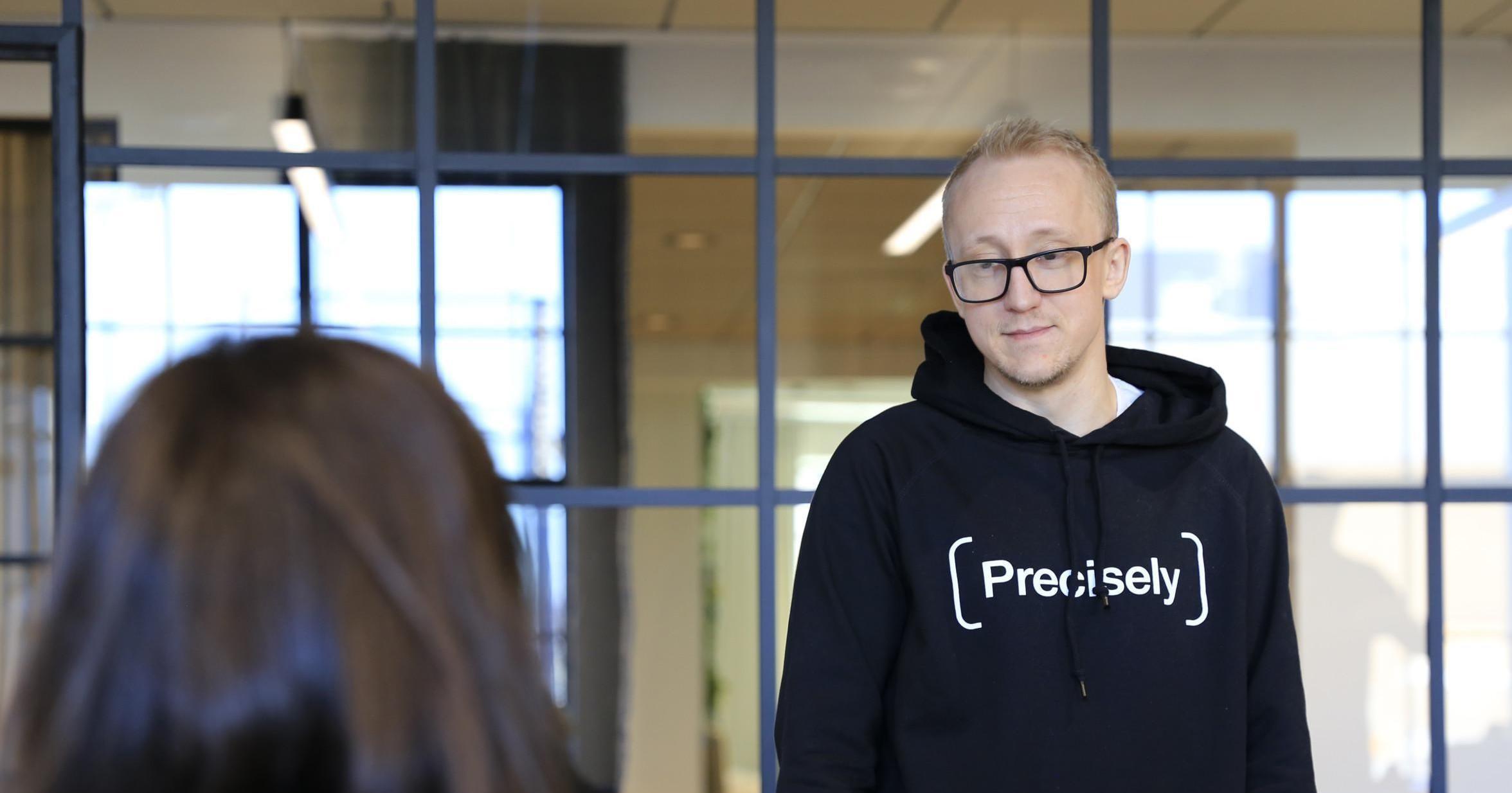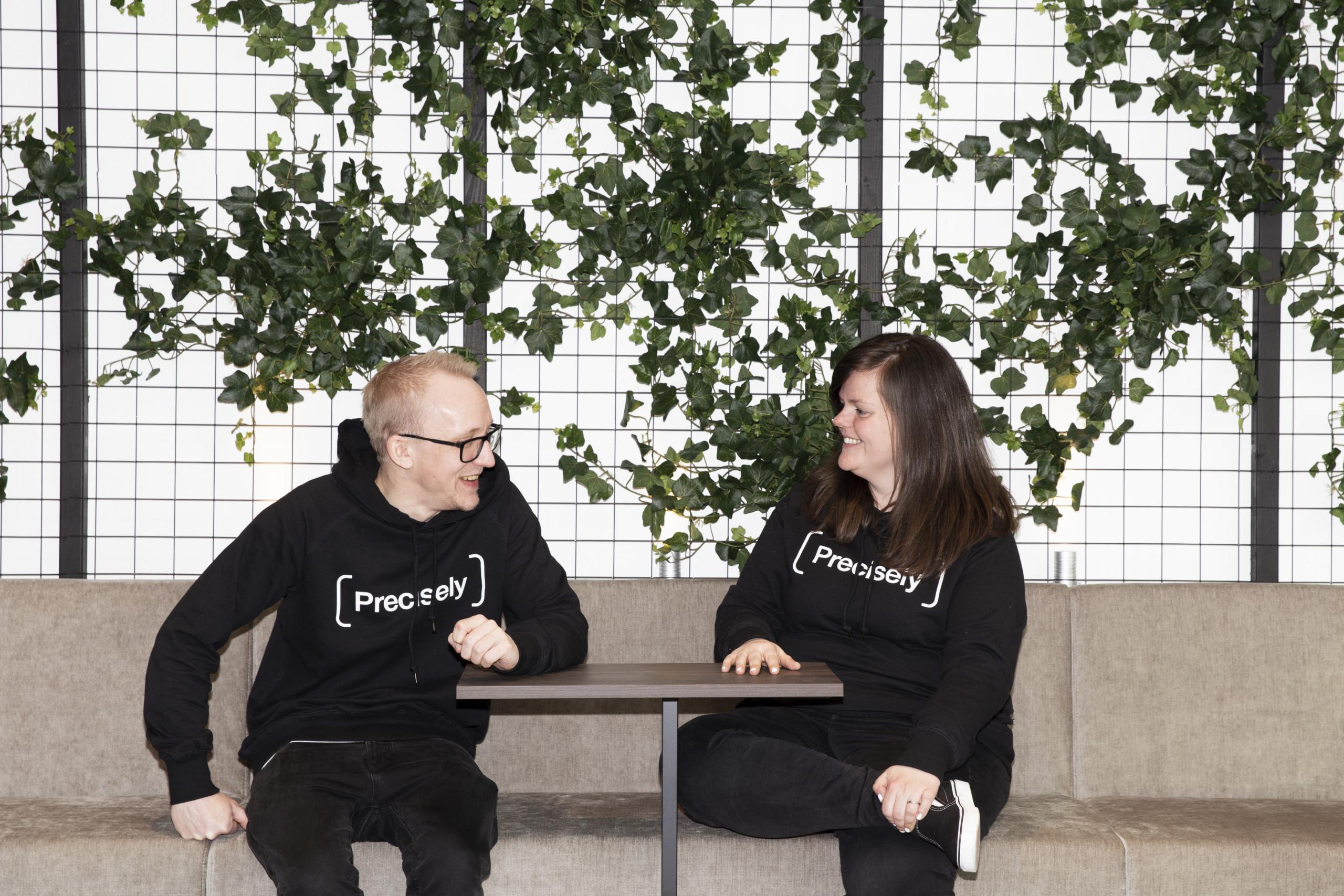Accessibility in focus: How Precisely is improving accessibility

As more and more people use the internet, accessibility for all has become an urgent issue. Companies need to be able to reach as many people as possible. Those who have not integrated accessibility features into their software and websites are falling behind. In fact, these companies are losing billions of dollars to companies with accessible sites.
With the current information and guidelines on how to make your online content more accessible, there is no reason for companies not to at least do the minimum amount, such as color and font adjusting or adding text to images. The WHO estimates about 15% of the world’s population has some sort of disability. These include vision, hearing, cognitive, physical and more. With simple solutions now available, it’s possible to adapt your web content in a way that reaches all people.
Accessibility goals in the workplace
It’s not only on the user’s side that accessibility is important, but also in the workplace. According to the SDG (Sustainable Development Goals), put in place by the UN, one of the target goals of universal access states, “By 2030, achieve full and productive employment and decent work for all women and men, including for young people and persons with disabilities, and equal pay for work of equal value.”
In order to achieve this goal, all businesses must upgrade and adapt the tools used by employees and developers. Strategies must be developed for inclusive workplaces so that everyone may contribute. The idea behind this is “universal design.”
There are many devices that can be used to enhance the workplace for a variety of issues. One example that is easy to implement and can be used in several ways, is to equip computers with text to speech software. This not only improves performance for those with visual impairments, but also for those who have difficulty using a keyboard. Some people simply prefer this method while performing other tasks.
How is Precisely approaching accessibility in its software?
Our lead product designer, Amanda Silveira, has this to say about how we are working to incorporate accessibility in every aspect of the contracting platform.
 “We’ve just started this journey to make our platform more accessible, so we’ve been collaborating with different areas: Design, QA, Frontend, etc. We are developing a strategy that begins with assessing where we are now and what we should do to improve. For example, Maria on Frontend is developing a checklist. In the meantime, Ove from QA is testing and checking code to see if anything may be missing.
“We’ve just started this journey to make our platform more accessible, so we’ve been collaborating with different areas: Design, QA, Frontend, etc. We are developing a strategy that begins with assessing where we are now and what we should do to improve. For example, Maria on Frontend is developing a checklist. In the meantime, Ove from QA is testing and checking code to see if anything may be missing.
To ensure that we do everything thoroughly, we follow the Web Content Accessibility Guidelines. We are starting, of course, at the beginning with Level 1 to make sure we have everything we need before starting Level 2. We want to take this seriously, so we are doing it at a pace we can actually achieve.
One example of something we are working on with content accessibility regards images. When using images, companies must give text as a support for people who may be vision impaired. In this way, if they are using screen readers, they can have a similar experience to the visual version.
In Level 1, the goal is to make sure that people can use the platform. So if we are not compliant with the first level, people most likely will not be able to navigate further. This is why we are taking the time to be very thorough. To make sure that Precisely has the best usability for everyone.”
What are some examples of accessibility features?
 People process information in different ways. Some need larger text, while others need to eliminate distractions such as pop-up windows in order to focus and process information.
People process information in different ways. Some need larger text, while others need to eliminate distractions such as pop-up windows in order to focus and process information.
In order to adapt content, it’s important to address the myriad of factors in the way people use software and the internet. There are certain specialized technologies that help convert many functions. However, in order for things to work properly, the code that companies incorporate needs to be adjusted and adapted accordingly.
The following is a small sample of the various ways in which companies can implement and improve the experience so that every person is able to interact with software and websites:
Consistency and predictability
– Labelling of functions such as links, buttons, and controls should be consistent, and the expected function should be predictable from the label.
Descriptive titles, headings, and labels
– Page titles, section headings, and labels for forms, links, and controls are sometimes read on their own or out of context and need to be descriptive.
Helpful error and success messages
– Dialogs and other messages, such as after submitting forms, need to help users complete their tasks. It’s important to avoid disorientation, distraction, confusion, or discomfort.
Multiple navigation mechanisms
– Websites need to provide multiple ways to locate web pages. For example, provide sitemaps and search functionality in addition to hierarchical navigation menus.
Skip links
– Mechanisms to allow keyboard users to skip over repetitive blocks of content such as page headings, navigation bars, or menus. Note: too many skip links are counterproductive to this purpose.
Visual orientation cues
– Examples include using background colors to indicate different parts of the content. Using unique headings, and placing relevant information in prominent areas of a web page is also important.
 Dedicated to leading the way
Dedicated to leading the way
We feel that accessibility on the internet and in every aspect of life is a human right. No one should be left behind when the internet is becoming more of an everyday necessity. Everyone should be able to navigate web content without barriers.
This is why we have been working carefully with our software and website with the goal of complete accessibility for all. We are dedicated to the best user experience in legal contracting online. Above all, we are proud to be leading the way toward an equal future on the internet for all people.
